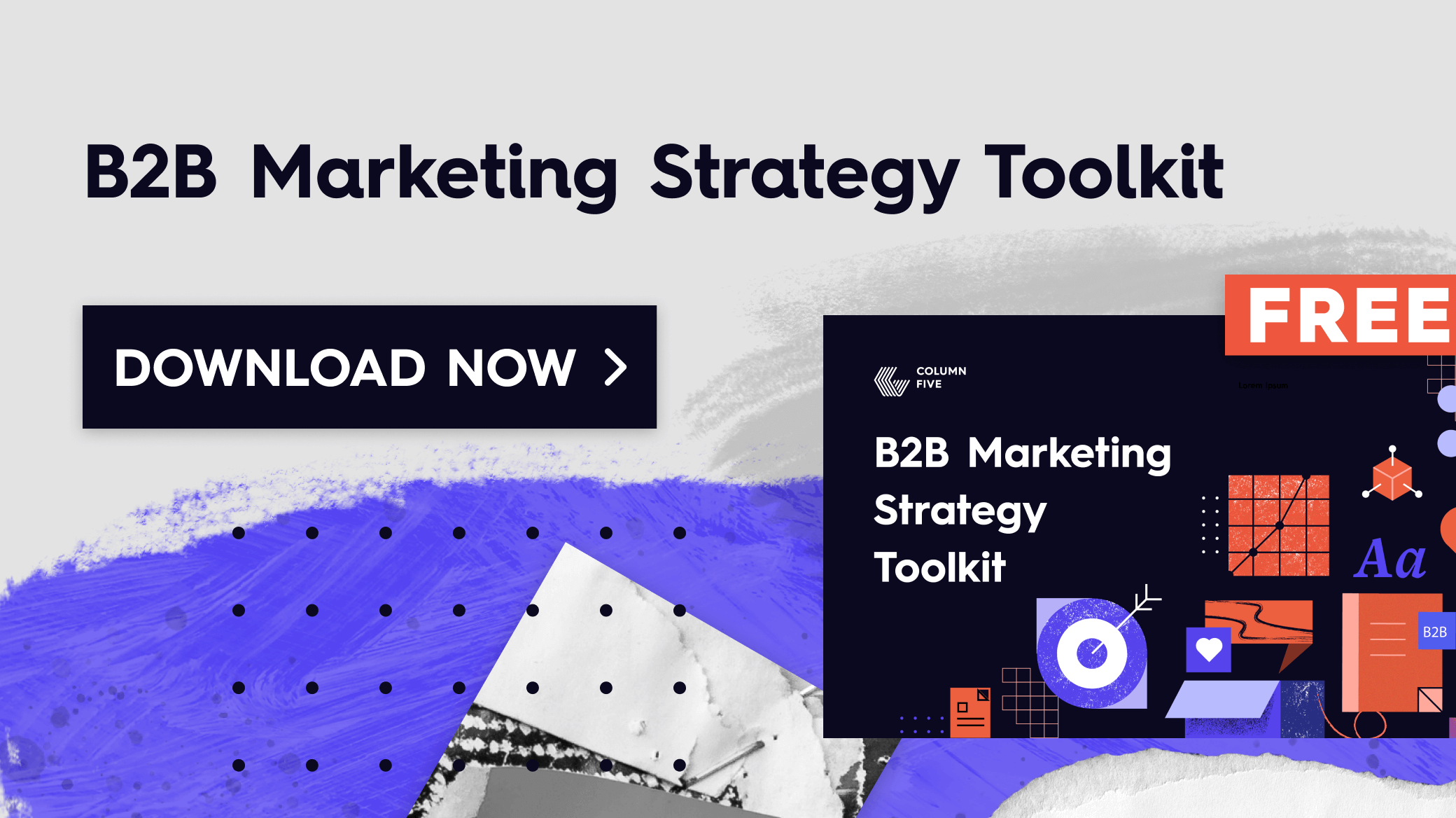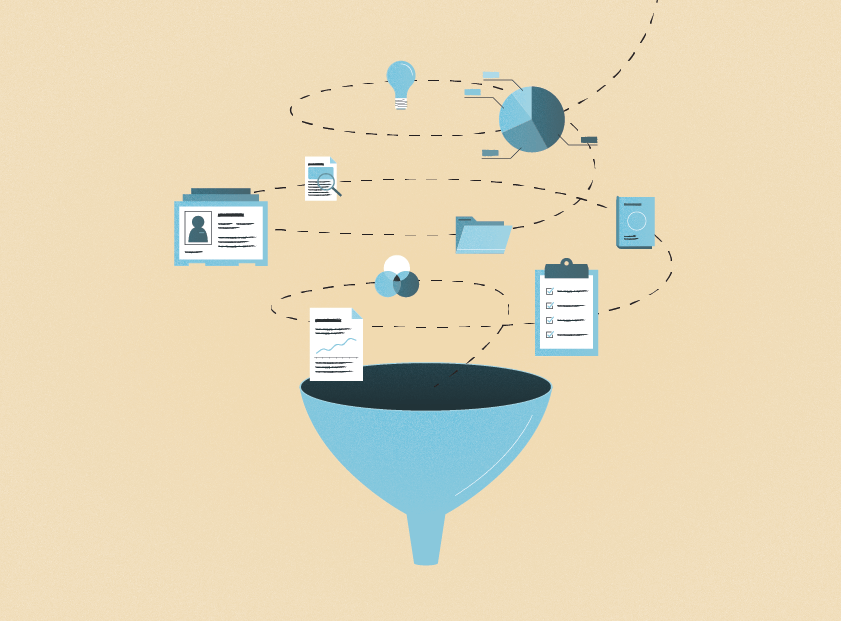My fellow marketers, I believe we have gone too far.
If you want to succeed in marketing, you undoubtedly need a strategy with the basics: strong positioning, a defined audience, a plan to execute, etc. And, yes, you need metrics to measure success. But are those metrics always going to result in strong marketing and branding? Nope. Should they guide every creative decision? Definitely not. Although data is helpful, contrary to popular belief, you can’t rely on it as the single driving force to create good marketing.

The Myth of Marketing Measurement
Make no mistake; I believe in data. But data alone is not the secret weapon to successful marketing. In fact, it can sometimes cloud your judgment, making you focus on the wrong things, waste more time, and—in some cases—end up worse than where you started. Why? Because there is a dark side to data-driven decision-making that many of us aren’t acknowledging.
- The biggest numbers are not always the most meaningful. We’ve seen plenty of agencies bragging about numbers that sound great but aren’t always aligned to (or supporting) their clients’ real goals. Trust us. It’s easy to “spin” a marketing report and make it look successful just by showering someone with impressive numbers. For example, you might brag about a campaign getting a million impressions, but if those impressions didn’t convert, that ultimately means that a million people scrolled past your content.
- Data-tracking is a lot of work. It takes time, energy, and infrastructure to track data. At some point, you have to examine whether that investment is truly valuable (particularly as it relates to the accuracy, meaning, and confidence you have in your measurement). How much time have you spent this quarter, fellow marketer, puzzling over the discrepancies in data between Google Analytics, Facebook’s reporting, and your third-party distribution platforms? Did you get a sense of satisfaction after all that deliberation? I’m guessing not. If the benefit doesn’t outweigh the investment, that data is not actually valuable.
- Data is only meaningful if you do something with it. The truth is that tracking data and making meaningful decisions based on that data are two entirely different things. We’ve seen clients with loads and loads of data in their dashboards but absolutely no clue how to turn that data into a strategy that will actually move the needle. (If that’s something you struggle with, find out more about how to find the stories in your data.)
Despite these facts, marketing teams are being held hostage by the desperate need to make data-driven decisions to please higher-ups. But depending on your brand and goals, the moves you need to make may actually be hindered by this obsession with data.
Why Measurement Isn’t Everything
Think of the best marketing campaigns, the ones that moved culture.
Nike’s “Just Do It.”
Apple’s iPod campaign.
Dove’s Real Beauty.
Do you think every message and visual was guided by a meaningful measurement? Do you think the boldest campaigns would have even tested well?
Part of what makes great campaigns great is that they take risks and defy convention. Almost by definition, then, history’s greatest ads wouldn’t have survived a data-only measuring stick because testing data tends to lead us in safer directions. In SaaS, where most of our client work is centered, this data-based fear is more widespread than ever. Few brands want to take risks, try something new, or change so much as a CTA without the “data.”
This is especially true when it comes to creative decisions around things like branding or naming. However, measurement may not be relevant—or even really possible—in these instances. To accurately measure the impact of something, you need all other factors to remain constant while that one thing changes. But when does a company halt every single thing while rebranding? When does a market ever stand still during a year-long rebrand? Demanding a correlation between the kerning in your new logo and the impact on the marketplace is a fool’s errand. And while you can measure things like brand sentiment, there are certain intangibles you simply can’t capture in a meaningful way.
I often see this “creative hesitancy” in extremely product-driven companies, or companies where the marketing department is overseen by a COO or CTO. Without an empowered marketing leader in place, one who understands the value of experimentation and the human nature of marketing, company culture becomes insistent on data-proofing for every decision, whether micro or macro. It’s understandable, as other disciplines’ leaders don’t have the breadth of experience to know what will work or not—to understand the difference between gutsy and stupid.
It is only years of creative work that improve your acumen for understanding an audience, knowing what will resonate, and being able to tell a story that makes you stand out. But when marketers are beholden to data for every move they make, the freedom to harness that creativity and create meaningful work that moves the needle goes out the window.
A focus on data often stifles marketing talent and halts things from getting done.
My friend and Creative Director at the web3 NFT company Unblocked, Jimmy Johenning, says it best: “Data and creative have to be co-pilots.” Use data, but know why you’re using it.
When Should You Use Data in Marketing?
I like to think of data as a servant, not a master. It can be a great tool to inspire, strengthen, and help you gauge your success. It should be a part of your decision-making process. But it can’t be the only influencing factor in marketing decisions. That said, there are sensible times to put it to use:
- Determine a baseline. It’s valuable to identify when any given tactic is over- or under-performing your norm. Memorialize your metric baselines to understand whether your creative lands or not.
- Get creative inspiration. Data is not antithetical to great creative. As brilliant ideas don’t always appear out of thin air, and vetting your ideas is a key part of the brainstorming process, you can turn to data to understand what has historically worked, what type of content resonates, and why it did. When you’re looking for new ideas or ways to put a fresh spin on old ideas, that historical data can help inspire your next piece—without creatively constraining you.
- “Soft launch” a campaign. Spend your distribution slowly to start out a campaign, testing a few different angles of visuals, copy, audiences, and channels. While your leadership won’t always be excited about a slow ramp-up, getting direct market feedback can help you make smarter decisions about allocating the larger campaign budget.
- Test explicit components of a campaign. I believe in thoughtful experimentation. That doesn’t mean you go buck wild and run with whatever crazy idea you have. It does mean you set a benchmark and thoughtfully measure your creative campaigns to see what did/didn’t work. This will give you the insight you need to better understand how your creative ideas translated and how to tweak them for better results. (For more ways to work effectively, see our tips to run a successful marketing campaign.)
Remember: Data’s job is to work for you—not against you. When embarking on a data-centric test, make sure your eyes are wide open about the data’s potential flaws or shortcomings. Ask yourself—and document—what question(s) you’re seeking to answer, and how directly the data is going to answer your questions. For the majority of marketing tests, you’re going to get a piece of the answer, but not a silver bullet.
Re-examine how data plays a role in your current operation. Use it to round the edges, but don’t let data alone decide the broad strokes. And most of all, I beg of you, let marketing be marketing, led by marketers who do marketing.





